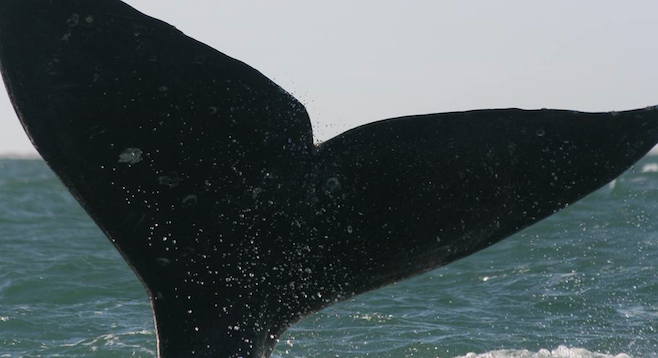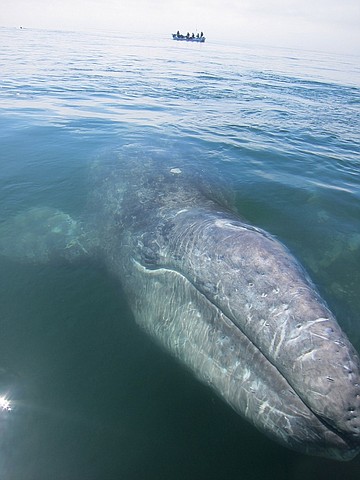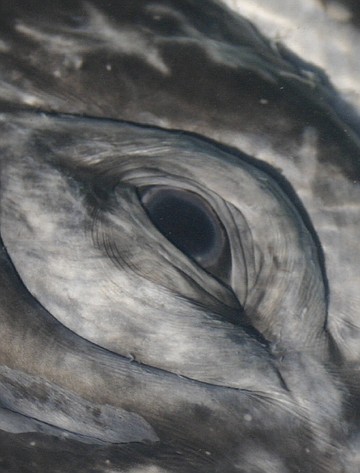 Facebook
Facebook
 X
X
 Instagram
Instagram
 TikTok
TikTok
 Youtube
Youtube

Our whale-watching excursion in San Ignacio, Mexico, turned into a close whale encounter in the literal blink of an eye.

On the Pacific side of the Baja peninsula, there is a large lagoon where gray whales migrate annually from Alaska to teach their young the fine art of being a whale.
Most calves are born during the migration in January, and by mid-February they are old enough that mothers bring them to the local boats to show them off. That's why we were there.
We saw a lot of splashing on the surface and thought it was a mother nursing her newborn – a rare sighting, as they usually do this away from prying eyes.
Approaching cautiously, we took care to not encroach on their comfort zone. Getting closer, we realized it was not a nursing pair but a mating pair. From a distance these behaviors are hard to differentiate.
We immediately backed off, but apparently the large bull did not like the intrusion and he turned towards our boat. We weren't worried; we knew there had never been an attack by one of these whales on a boat. But on occasion they do give warnings if people approach too close.

When we lost sight of him, we hunkered down in the boat to keep a low profile until he went away, but after several minutes I cautiously looked over the side and found myself staring eyeball to eyeball with him directly below us (left).
He blinked once and disappeared in a flash. Suddenly his large flukes came up and gave our little boat a good whack that rocked us and soaked everyone with seawater.
Needless to say, we give them a much wider berth now.
James Dorsey has worked at San Ignacio Lagoon as a resident naturalist for 16 years. For more information on tours, visit bajaecotours.com.


Our whale-watching excursion in San Ignacio, Mexico, turned into a close whale encounter in the literal blink of an eye.

On the Pacific side of the Baja peninsula, there is a large lagoon where gray whales migrate annually from Alaska to teach their young the fine art of being a whale.
Most calves are born during the migration in January, and by mid-February they are old enough that mothers bring them to the local boats to show them off. That's why we were there.
We saw a lot of splashing on the surface and thought it was a mother nursing her newborn – a rare sighting, as they usually do this away from prying eyes.
Approaching cautiously, we took care to not encroach on their comfort zone. Getting closer, we realized it was not a nursing pair but a mating pair. From a distance these behaviors are hard to differentiate.
We immediately backed off, but apparently the large bull did not like the intrusion and he turned towards our boat. We weren't worried; we knew there had never been an attack by one of these whales on a boat. But on occasion they do give warnings if people approach too close.

When we lost sight of him, we hunkered down in the boat to keep a low profile until he went away, but after several minutes I cautiously looked over the side and found myself staring eyeball to eyeball with him directly below us (left).
He blinked once and disappeared in a flash. Suddenly his large flukes came up and gave our little boat a good whack that rocked us and soaked everyone with seawater.
Needless to say, we give them a much wider berth now.
James Dorsey has worked at San Ignacio Lagoon as a resident naturalist for 16 years. For more information on tours, visit bajaecotours.com.
Comments